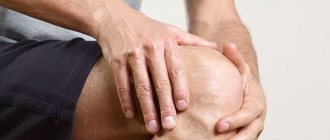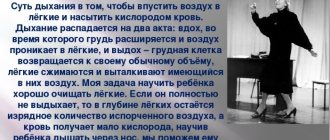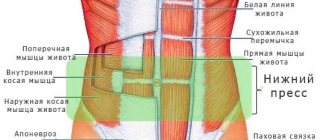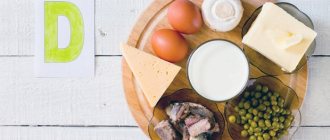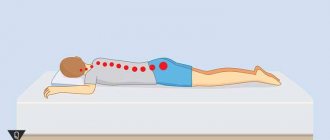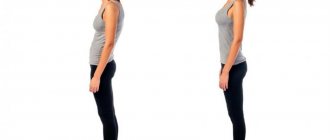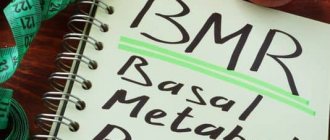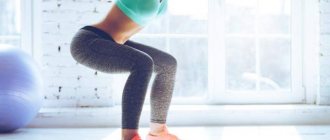What is flat feet
Flat feet is a chronic disease in which a change in the configuration of the foot occurs, namely the flattening of its arches. The shape of a person’s sole changes, which entails a set of problems for the body. There are several reasons for the appearance of flat feet:
1. Congenital weakness of connective tissues, and as a result of the ligaments of the feet. Orthopedic traumatologists have identified reliable cases of familial flatfoot. It is worth keeping in mind that this pathology of the musculoskeletal system is physiological for children under 5 years of age. Initially, newborns’ feet have a completely flat surface, and when they acquire walking skills, the foot takes on an “adult” appearance.
2. Past diseases of the muscles and nerve endings, as a result of which the tone of the foot is disrupted, the arches relax and the foot becomes flattened. This group includes rickets, poliomyelitis, paresis of the lower extremities (after a stroke, with advanced osteochondrosis of the spine, nerve injury).
3. Direct skeletal injuries can cause severe flat feet. It often occurs secondary to fractures of the pelvis, hip, and complex ankle fractures. This flatfoot is almost impossible to eliminate without surgical interventions.
Related measures in the fight against flat feet
A controversial issue is running with flat feet. Many people believe that running with this diagnosis is contraindicated, since ligaments can be injured and pain may appear. However, there is an expert opinion that running, on the contrary, is very useful for flat feet, as it strengthens the arch of the foot, warms up the ligaments and muscles. But at the same time, it is necessary to consult with your doctor and choose special comfortable shoes. To begin with, it is recommended to wear thin moccasins for running to simulate barefoot running, thereby creating a certain load on the arch of the foot. It is better to start running training on a treadmill in the gym or on a flat path in the forest.
In addition to certain exercises to improve the condition of the feet, you can include various types of walking in a complex of therapeutic physical activities: on your toes, on your heels, on the side of the foot or its inner surface, on an inclined surface up and down, on a convex surface, on your toes with your knees raised .
In warm summer weather, it is recommended to walk barefoot on uneven surfaces, preferably rocky ones. Since there are active receptors on the foot, this procedure helps to improve the health and restore the correct position of the foot.
An effective method in the treatment of flat feet is a special massage: rubbing the feet, stroking, pressing on certain areas of the foot. This massage has a good effect on the muscles and ligaments of the foot, tones them, thereby correcting the deformity.
From childhood, to prevent the occurrence of flat feet, children need to be taught to walk correctly. Correct walking requires straight, straight shoulders, a high head, and the feet pointing forward.
It is important to remember that using insoles alone in the fight against flat feet will not bring the desired result. In combination with this, special physical exercises must be present that help strengthen the arch of the foot, tone the muscles and help correct existing foot deformities.
Share link:
Physical therapy for flat feet
Exercise therapy classes are undoubtedly suitable for correcting foot function and reducing the progression of flat feet. A competent set of exercises will help reduce diseases in the following ways:
- Training small muscle groups of the foot that maintain shape and form arches.
- Regular exercise strengthens your hips, legs, abs, and back. This allows a person to improve their posture.
- Relieving painful tone in small muscle groups of the feet. This relaxes the blocked muscles and improves their nutrition. This stimulates the restoration of the arches in the feet.
Exercise therapy classes for flat feet in childhood are of the greatest value. Orthopedists note that methodical exercises can completely eliminate flat feet of the first and second degrees.
Gymnastics for adults
An adult foot is not an enlarged copy of a child's foot. However, the exercises used to correct already formed feet are almost the same. Therefore, you can use the training complex described above.
Do not forget to consult with your doctor before starting training.
In adulthood, the treatment period increases, and, frankly speaking, there is no need to talk about a cure as such. Gymnastics is more aimed at relieving pain and preventing the progression of further foot deformity.
The video below shows a charging option for flat feet in adults.
Rules for performing exercise therapy
Like any therapeutic approach, exercise therapy has its own characteristics. Conditions for successful exercise to treat flat feet:
- A set of exercises is performed daily, 1 or 2 times a day. For adults, the duration should not exceed 20 minutes. Children are less assiduous, so offer shortened versions of 10 to 12 minutes.
- Classes are performed in comfortable clothes, maintain a comfortable room temperature (21-23 degrees).
- All approaches are performed without pain, only a slight pulling sensation in the muscles and fatigue after exercise.
IMPORTANT! If sharp pain appears during the exercise complex, you should stop and see a specialized specialist.
Treatment methods for flat feet at home
The treatment of flat feet must be approached comprehensively:
- Orthopedic shoes. Buying orthopedic shoes is an important step towards treating flat feet. With its help, you can quickly and effectively eliminate flat feet;
- Exercises. There are many different exercises that will help get rid of flat feet once and for all;
- Massage. You can knead your feet with your hands or massagers;
- Baths with changing temperatures are good for toning the feet;
- Diet. It is necessary to control your weight and adhere to proper nutrition.
However, if signs of flat feet appear, it is better to visit a doctor. Treatment at home can be carried out according to the doctor’s recommendations after the diagnosis has been determined.
Exercises for flat feet in adults and children
The proposed list of exercises is maximally adapted for home exercises.
1. Exercise “Rink”. While sitting on a chair, keep your back straight. Roll a small tennis ball or apple along the floor with your foot. It is enough to perform the exercise for 1 minute with each leg. Try to roll the ball not only with the middle of the foot, but also with the participation of the toe and heel.
2. Exercise “Boat”. We bring the feet together, sole to sole, forming them into a shaped boat. We hold the feet in maximum abduction for 10 seconds (4-5 seconds are enough for children), relax the legs and place them on the floor. Repeat 4 times.
3. Exercise “Robber”. More suitable for children. We place our feet on a waffle towel spread lengthwise along the floor. At the end farthest from the feet we place any medium-sized object (toy, ball, small bottle). You need to, by fingering and squeezing the towel with your foot, gradually pull the object on the towel towards you. The exercise perfectly warms up the entire foot; regular exercises are aimed at strengthening the muscles that form the arch on the soles. It is enough to repeat 2 approaches with each leg.
4. Exercise “Sickle”. We rest our heel on the floor, move our toes along the floor left and right, imitating movements during reaping. Try to move the toe of your foot with the greatest amplitude. 30 seconds on each leg is plenty of time.
5. Exercise “Mill”. Sitting on the floor, legs stretched forward, toes pointing up. We rotate the toes of our feet in a circle, imitating the movements of the blades in a mill. We change the direction of rotation. 1-1.5 minutes is enough to complete.
6. Exercise “Painter”. Starting position – sitting on the floor, legs extended forward. We move the sole of the right foot along the left foot, smoothly rising along the shin to the knee. Then we smoothly lead down. Throughout the execution, the foot is pressed tightly against the surface of the opposite leg. Repeat 2 times with each foot.
7. Exercise “Window”. Sitting on a chair, feet are on the floor, pressed against each other. We spread our feet, lifting their inner parts from the floor, as if opening window shutters. Repeat 10 times.
8. Exercise “Artist” . Hold a pencil or stick between your 1st and 2nd toes and “draw” on the floor. You can use a large sheet of paper and invite your child to draw something. Be sure to repeat the exercise with both feet.
9. Exercise “Collector”. Collect small objects scattered on the floor into a box using only your feet.
10. Exercise “Drummer”. While sitting on a chair, with your toes pointed forward, vigorously touch the floor with your feet one at a time, imitating drumsticks. Completed within half a minute.
11. Exercise “Caterpillar”. Sitting on a chair, move your feet along the floor, imitating the movements of a caterpillar, namely: maximum bending of the sole into an arc, then extension. The foot should move forward smoothly. Repeat the caterpillar movement with the opposite leg. 2-3 repetitions are enough.
12. Walking on your heels for 1 minute.
For classes with children, choose 5–6 different types for one lesson. So, maintain the child’s interest, thereby he will not get bored with classes, and together you will achieve the maximum in the treatment of flat feet.
Contraindications
Instructors-methodologists have a clear list of those diseases and human conditions for which practicing exercise therapy is not only ineffective, but also dangerous. Key points to pay attention to:
- High blood pressure that does not decrease from taking antihypertensive drugs (more than 155⁄100 mmHg).
- The presence of signs of an infectious disease, accompanied by an increase in body temperature above 37.5 degrees.
- Extensive skin lesions (ulcers, frostbite, burns). This also includes infectious skin diseases: impetigo, erysipelas and others.
- Oncological diseases (except those that have been in stable remission for more than 2 years).
- Moderate and severe anemia of any etiology.
- Acute and subacute period of myocardial infarction, early recovery period after stroke.
Remember that the patient is his own doctor. A disciplined approach to exercise will hopefully help you achieve success in treating the disease.
What exercises to do to correct the arch of the foot
Physical therapy for flat feet should be regular. Exercises can be very different, aimed at training various muscles of the supporting apparatus.
Most often, problems with the feet and discomfort occur with transverse flat feet.
The following loads can be included in a set of exercises for flat feet.
Do the exercises while lying on the floor on your back:
- Pull the tips of your feet towards you as much as possible, while simultaneously trying to keep them turned inward.
- Bend your legs slightly, but place your entire foot on the floor. Then alternately raise your feet above the floor, with the toes of your feet touching the surface.
- With your knees bent, you need to spread your legs to the side so that your feet touch each other. In this position, you need to make movements with your feet in the form of clapping - i.e. spread your heels first and then your toes while simultaneously pressing the two feet against each other.
- One leg is extended, the other is bent at the knee. It is necessary to slide the bent leg along the shin of the second leg, as if hugging it. First one way, then the other.
Exercise sets
The exercise therapy complex for flat feet in children includes exercises that are performed from different body positions.
Physical therapy begins with lying exercises:
- To do this you will need a special foam mat. The child lies on his back and begins to pull his toes in different directions. You need to complete the exercise by turning your feet as if clapping your hands.
- Lying on the mat, you need to raise your legs, lifting your heels off the mat, pull your toes forward, and try to touch the surface with them.
- The starting position is the same. Raise your legs, move the foot of your right foot over your left. Perform a similar exercise with your left leg.
The next block of exercises is performed while sitting on the mat:
- Stretch your legs forward. Alternately raise your toes, alternating both legs.
- With your right hand, grab the toes of your right foot. Make similar movements with the left. When performing the exercise, the child leans forward and slowly pulls his fingers towards him.
- The legs are bent at the knees and placed on the toes. Perform heel abduction and extension. Make sure that the socks do not come off the surface.
- Sitting on the mat, grab a tennis ball with your feet. When this happens, raise and lower your legs with the ball.
- The starting position is the same, the child begins to roll the ball with his feet from toes to heels and in the opposite direction.
A further set of exercises is performed while sitting on a chair. An important feature is that the furniture exactly matches the child’s age. When sitting, the child's feet should be on the floor. A video on how to properly perform exercise therapy for flat feet in children can be found here.
- Flexion and extension of the fingers on the lower extremities.
- You need to draw circles with your feet. First clockwise, and then counterclockwise.
- Lifting your toes off the mat first and then your heels. Performing a rollover.
- Place your legs on the outer edge and slowly roll onto the inner edge.
- To perform the exercise you need a tennis ball. Alternately make circular movements with your feet, rolling the ball. Next, roll it to the other leg and do similar actions.
Exercises in a standing position. It is best to use a massage mat to perform them. Gymnastics should not exceed 15 minutes.
- Walking on the mat alternately on your toes and heels.
- On both sides of the foot.
- Rolling from toe to heel.
- The exercises end with jumping on the mat.
Actions while standing on a flat surface:
- Rolling the foot of a gymnastic stick one step forward and backward. The goal is to massage and strengthen the entire arch of the foot.
- The gymnastic stick must be held in two hands across the shoulder blades. Fix your back while doing this. Do squats. The heels are firmly on the floor.
- The child rests his hands on a stick. Stand on your heels, turn to the left and to the right.
Physical education is most effective for children under 10 years of age. Can sometimes be performed by teenagers. In older children, it is impossible to correct flat feet using gymnastics alone.
Parents should pay due attention to their children. You should not do the exercises for too long or force the child to do something that he does not want.
Initially, classes are held for three minutes, with a gradual increase to 15. The duration of initial exercises for teenagers is for 5 minutes, increasing to 25.
